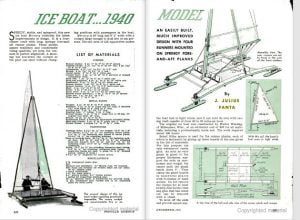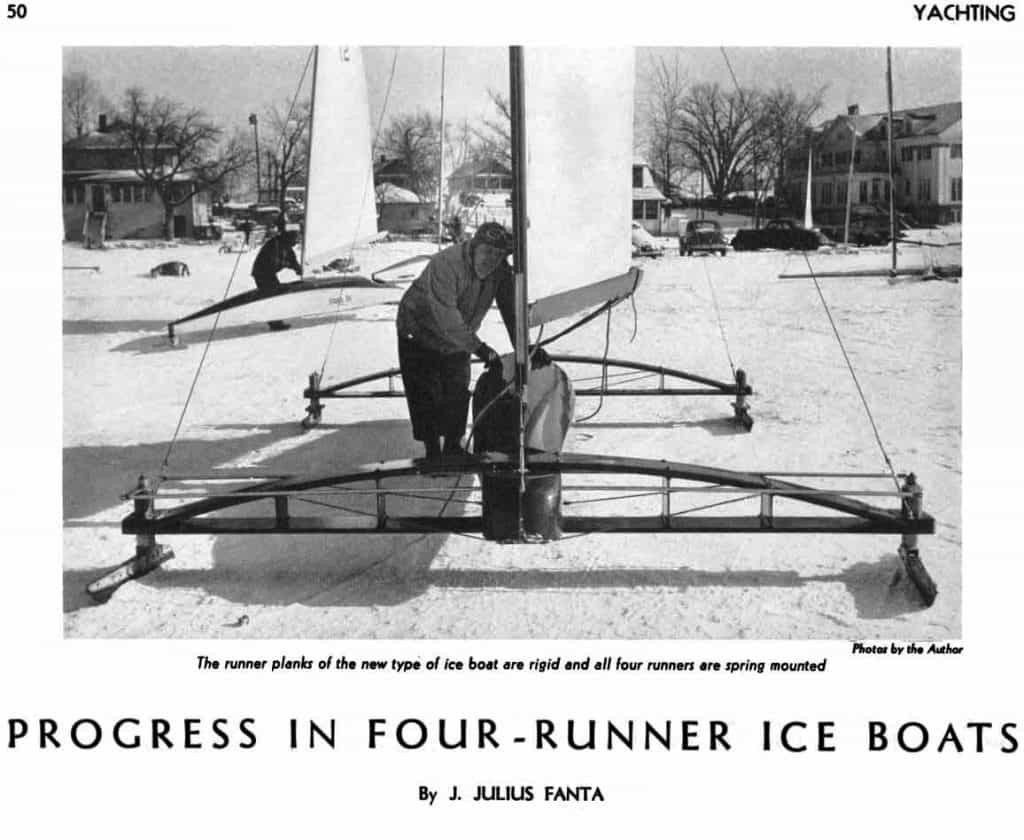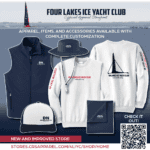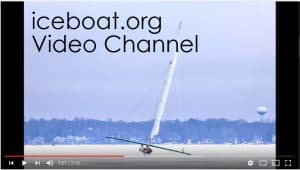Here’s some content for the doldrums of ice sailing, technology that never caught on. As I’ve stated before, iceboating appeals to dreamers. Some of their ideas became standard equipment but most didn’t.
In the 1930s and 40s, yachting author J. Julius Fanta must have taken a fancy to the idea of a four-runner iceboat and wrote at least two articles about them. In a thoroughly detailed article in Yachting Magazine about a four-runner Skeeter developed on Geneva Lake, he predicted “the four-runner iceboat is the coming thing in ice yachting and not a fly-by-night experiment.” Four-runner iceboats never became popular because they were not an improvement upon a standard three-runner iceboat. Download the Yachting Magazine article in pdf.
In a 1940 Popular Science article, he presented detailed plans for a four-runner stern steerer.

A four-runner Skeeter was photographed by Carl Bernard at the 1947 Northwest on Lake Winnebago.
UPDATE: July 30, 2018: Via Skeeter Iceboat Club member, Jane Pegel:
Skeeter Ice Boat Club member Bob Ferris built and raced a 4-runner Skeeter. I believe this was in the 1950’s.
This boat had a springboard at the bow and also at the stern with a runner on the end of each springboard.
My recollection is that the runners at each end were steering runners and could be turned via cables and foot pedals.
The runner plank was located approximately half way between the two ends of the boat.
The runner plank was shorter than customary. When sailing, the bow and stern runners were on the ice
and the runner on the leeward end of the runner plank was on the ice. The runner on the windward end
of the runner plank “floated” slightly above the ice surface.The idea of the design was to be able to turn “on a dime”. The boat could make a tight turn at the
leeward mark (occasionally spun out.) Bob won some races with the boat but basically the boat was not as fast as her
competition sailing on the “straight away”. Only the Bob Ferris design would turn on a dime. Only three of his runners were touching the ice, what ever runner that was on the windward end of the runner plank was floating above the ice. The 4 runner boats that essentially were a rectangle would not be able to turn on a dime.




